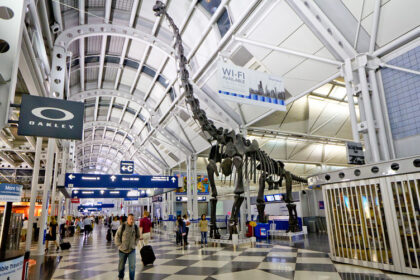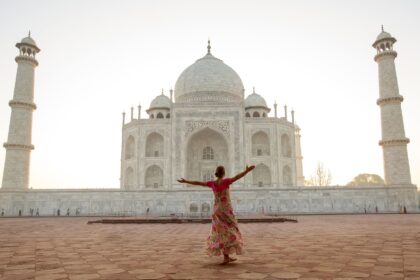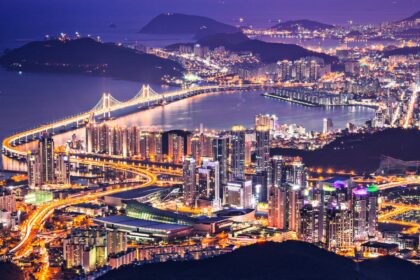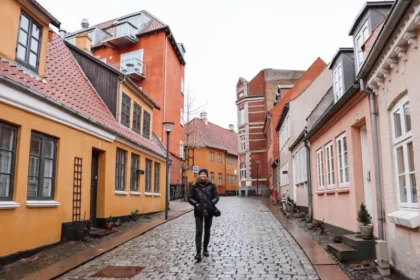I used to be the friend everyone came to for travel tech advice. My phone was loaded with dozens of carefully researched apps, my cloud storage was perfectly organized with digital copies of every document, and I had backup systems for my backup systems. I could navigate any city with GPS, translate conversations in real-time, and manage my entire trip from a single device. Technology had transformed me from a nervous traveler clutching printed maps to a confident digital nomad who could handle anything with a few taps on my screen.
Then I took a trip to rural Japan where everything that could go wrong with technology did go wrong, and I discovered just how helpless I’d become without my digital crutches. What was supposed to be a peaceful exploration of traditional villages turned into a comedy of errors that taught me the hard way about the dangers of putting all your faith in pixels and WiFi signals.
This isn’t an anti-technology rant – digital tools remain some of the most powerful resources available to modern travelers. But it is a reality check about what happens when our technological safety nets fail us at the worst possible moments, and why the most tech-savvy travelers still need analog backup plans.
The GPS Ghost Town: When Navigation Apps Lead You Nowhere
The Setup: I was driving through rural Hokkaido, using my trusted navigation app to find a traditional hot spring resort I’d booked for the night. The app had never failed me before, and I’d become completely dependent on turn-by-turn directions for all my travels.
The Digital Confidence: My phone showed a clear route with precise arrival time estimates. I didn’t bother downloading offline maps or studying the general area because the GPS was working perfectly and showing strong signal strength.
The Phantom Destination: After following the directions precisely for two hours through increasingly remote mountain roads, I arrived at the coordinates to find absolutely nothing – no resort, no buildings, no signs of human habitation. Just wilderness and a dirt road that ended at a cliff.
The Reality Check: My navigation app had somehow confused two similarly named locations that were 200 kilometers apart. The GPS coordinates were accurate, but they were for the wrong place entirely. I was now lost in the mountains with no cell service and no idea how to get back to civilization.
The Analog Rescue: Fortunately, I found a physical road sign in Japanese that didn’t match anything on my digital map. Using my emergency phrasebook and the basic Japanese I’d learned, I eventually flagged down a local driver who helped me understand that I was nowhere near where I thought I was.
The Expensive Lesson: What should have been a two-hour drive became an eight-hour ordeal. I missed my reservation (and lost the deposit), had to pay for emergency accommodation at triple the price, and learned that GPS apps can be confidently wrong in ways that are impossible to detect until it’s too late.
The Prevention Strategy: Always cross-reference digital directions with physical landmarks and road signs. Download offline maps as backup, and carry a physical map of your general area. Most importantly, tell someone your planned route and expected arrival time.
The Translation Tragedy: When Language Apps Cause International Incidents
The Setup: I was in a small restaurant in rural China, excited to practice using my translation app to order authentic local dishes that weren’t on any English menu. The app had worked well for basic interactions, and I felt confident about navigating more complex conversations.
The Confidence Booster: The app seemed to be translating my requests perfectly – the server was nodding and smiling, and I was getting responses that the app translated as confirmation of my orders. I felt proud of my digital cultural bridge-building.
The Lost in Translation Moment: What I thought was a conversation about food preferences was actually a misunderstanding about dietary restrictions, religious observances, and cultural taboos. The translation app was converting my English into Chinese that was grammatically correct but culturally tone-deaf.
The Cultural Crisis: I had unknowingly ordered dishes that violated local customs, made requests that were considered rude, and created a situation where the restaurant staff felt I was being disrespectful to their traditions. The app gave me no context for the cultural implications of my translated words.
The Escalation: Other diners began staring and commenting, the restaurant owner became involved, and what started as a simple meal order became a cultural incident that could have seriously impacted my safety and welcome in the community.
The Human Intervention: An English-speaking customer eventually helped mediate the situation, explaining both my innocent intentions and the cultural context I had missed. The situation was resolved with good humor, but it could have gone very differently.
The Lesson: Translation apps convert words, not meaning. They can’t convey tone, cultural context, or social appropriateness. For important conversations, especially those involving cultural sensitivities, human translation or careful preparation is still essential.
The Booking System Breakdown: When Digital Reservations Don’t Exist
The Setup: I had booked what I thought was the perfect accommodation in Istanbul through a legitimate-looking booking platform. I had confirmation emails, a reservation number, and all the digital documentation that should guarantee a smooth check-in process.
The Digital Paper Trail: My phone contained screenshots of the booking confirmation, the property photos, directions to the location, and even a digital copy of the terms and conditions. I felt completely prepared with all my documentation organized and accessible.
The Non-Existent Reality: When I arrived at the address, there was no hotel. The building existed, but it was residential apartments with no commercial accommodation. The booking platform had taken my money for a property that either didn’t exist or wasn’t actually available for tourist bookings.
The Technology Fail: My attempts to contact customer service through the app led to chatbots and automated responses. The phone numbers on the website were disconnected, and the email addresses bounced back as undeliverable. The entire digital infrastructure around my booking had evaporated.
The Backup Crisis: Because I had become completely reliant on digital booking systems, I had no backup accommodation plan. Most other places were fully booked, and I had no physical guidebook or local contacts to help me find alternatives.
The Expensive Resolution: I ended up paying premium rates for last-minute accommodation while simultaneously fighting to recover the money I’d lost on the fake booking. The digital convenience I’d trusted cost me both time and money.
The Prevention System: Always verify accommodation bookings through multiple channels. Call the property directly, check their official website, and have backup accommodation options researched in advance. Screenshots aren’t worth anything if the underlying business doesn’t exist.
The Cloud Storage Catastrophe: When Your Digital Lifeline Disappears
The Setup: I had meticulously organized all my travel documents in cloud storage – passport copies, visa information, travel insurance details, booking confirmations, and emergency contacts. I felt proud of my paperless travel system and the environmental benefits of going fully digital.
The Confidence in the Cloud: I could access my documents from any device with internet access, they were automatically backed up, and I never had to worry about losing physical papers. The system had worked flawlessly for months of travel across multiple countries.
The Digital Disaster: While traveling through rural Mongolia, I discovered that my cloud storage provider had suspended my account due to a “security concern” that turned out to be a false positive in their automated systems. All my documents were inaccessible, and customer service required verification using documents I could no longer access.
The Circular Problem: To restore my account, I needed to prove my identity using documents that were stored in the suspended account. The customer service representatives couldn’t understand that their security system had created an impossible situation for a traveler with no physical backup documents.
The Bureaucratic Nightmare: Without access to my visa documentation, I faced potential problems with border officials. Without my travel insurance information, I couldn’t get medical care when I got sick. Without my booking confirmations, hotels questioned my reservations.
The Analog Solution: I had to contact friends back home to email me physical copies of documents I’d scanned months earlier, pay international fees for emergency document services, and essentially rebuild my entire travel documentation system while dealing with the stress of being in a remote location.
The Lesson: Cloud storage is incredibly convenient, but it’s still just someone else’s computer that you don’t control. Always maintain physical copies of essential documents, and store digital backups in multiple locations with different providers.
The WiFi Wilderness: When Connectivity Becomes a Life-or-Death Issue
The Setup: I was traveling through remote areas of Patagonia with a detailed itinerary that relied heavily on internet connectivity for navigation, communication, weather updates, and emergency services. I had researched coverage maps and felt confident about maintaining adequate connectivity.
The False Security: The first few days went perfectly – I had good coverage in towns and acceptable service even in remote areas. My weather apps were providing accurate forecasts, my GPS was working flawlessly, and I was checking in regularly with people back home.
The Connectivity Cliff: On day four, I entered an area where there was simply no cell service at all – not weak signal, but complete digital silence. My weather apps stopped updating, my GPS couldn’t confirm my location, and I had no way to communicate with the outside world.
The Perfect Storm: That night, a severe weather system moved in that wasn’t reflected in my last weather update. My GPS coordinates became useless without connectivity to access maps, and I had no way to call for help or update anyone on my situation.
The Survival Mode: I was trapped in my tent for two days during a dangerous storm, with no way to get updated weather information, no way to call for rescue if needed, and no way to let anyone know I was safe. My technological advantages had become technological dependencies.
The Wake-Up Call: When I finally regained connectivity and received dozens of worried messages from people who expected regular check-ins, I realized how completely I had staked my safety on maintaining digital connections that were ultimately beyond my control.
The Backup Planning: Since then, I always carry emergency supplies for extended periods without connectivity, inform people about areas where I’ll be unreachable, and have analog backup plans for navigation and weather monitoring in remote areas.
The Battery Death Spiral: When Power Management Becomes Crisis Management
The Setup: I was taking a day trip to explore temples around Angkor Wat, relying on my phone for navigation, photography, research about each temple, and coordination with my tour guide. I started the day with a full battery and a portable charger as backup.
The Power Drain: The combination of GPS navigation, constant photography, translation apps, and the heat of Cambodia drained my battery much faster than expected. My portable charger turned out to be nearly dead because I’d forgotten to charge it the night before.
The Domino Effect: As my battery percentage dropped, I had to choose between navigation, communication, and photography. Each choice eliminated capabilities I’d become dependent on, and I realized how much of my travel experience was mediated through my device.
The Communication Crisis: When my phone finally died completely, I had no way to contact my tour guide, no way to navigate back to my hotel, and no way to access my accommodation details or emergency contacts. I was effectively stranded in a foreign country with no digital resources.
The Analog Scramble: I had to rely on other tourists for directions, communicate through gestures and broken English, and pay inflated prices for services because I couldn’t compare options or verify pricing through apps.
The Power Lesson: I now travel with multiple charging solutions, regularly check battery levels throughout the day, and have written backup plans for when devices die. Most importantly, I’ve learned to use technology strategically rather than constantly.
READ ALSO: The Hidden Cost of “Cheap” Travel: Why My Budget Backpacking Trip Cost More Than a Luxury Vacation
The App Apocalypse: When Software Updates Break Everything
The Setup: I was in the middle of a multi-city European trip, heavily dependent on various travel apps for transportation, accommodation, dining, and entertainment. My phone was my travel command center, perfectly configured with all the tools I needed.
The Update Trap: Overnight, several critical apps updated automatically and either stopped working entirely or changed their interfaces so dramatically that they became unusable. My transportation app couldn’t find routes, my translation app couldn’t detect languages, and my map app kept crashing.
The Functionality Failure: What made this particularly problematic was that I had become so specialized in using specific apps that I couldn’t easily switch to alternatives. My muscle memory, saved preferences, and learned workflows were all tied to software that had suddenly become unreliable.
The Cascade Crisis: Each app failure created problems that compounded with other failures. Without reliable transportation apps, I couldn’t get to places where WiFi would help me fix other apps. Without translation apps, I couldn’t ask for help with technical problems.
The Recovery Process: I spent an entire day of my vacation in internet cafes trying to reinstall, reconfigure, and relearn apps that had worked perfectly the day before. The time I lost troubleshooting was time stolen from actually traveling.
The Update Strategy: I now disable automatic updates while traveling and research app changes before installing them. I also maintain familiarity with backup apps and keep some functionality available through web browsers that don’t depend on specific software versions.
The Social Media Dependency: When Sharing Becomes More Important Than Experiencing
The Setup: I had developed a habit of documenting every aspect of my travels through social media, using various apps to create stories, edit photos, and share experiences in real-time. The positive feedback from followers had become an important part of my travel motivation.
The Content Creation Pressure: I found myself spending increasing amounts of time crafting the perfect posts, editing photos, responding to comments, and maintaining my online travel presence. The tail was beginning to wag the dog – I was choosing experiences based on their social media potential.
The Connection Addiction: When internet connectivity was poor or unavailable, I felt anxious and disconnected, not from the place I was visiting, but from the online validation I’d become accustomed to receiving. The travel experience itself felt incomplete without the digital sharing component.
The Experience Interruption: I realized I was experiencing many places primarily through my phone screen – photographing sunsets instead of watching them, documenting conversations instead of participating in them, and curating experiences instead of living them.
The Digital Detox: A forced break from social media (due to connectivity issues) reminded me why I had started traveling in the first place – for personal growth, cultural understanding, and genuine experiences that didn’t need external validation to be meaningful.
The Balance Restoration: I now designate specific times for social media interaction and photography, ensuring that the majority of my travel time is spent actually experiencing places rather than documenting them. The best travel memories are often the ones that exist only in my mind, not on my phone.
Building Technology Resilience for Modern Travel
After learning these lessons through various digital disasters, I’ve developed a more balanced approach to travel technology:
The Redundancy Rule: Never rely on a single device, app, or service for critical travel functions. Have analog backups and alternative digital solutions for navigation, communication, documentation, and emergency services.
The Offline Preparation: Download offline maps, save important information in multiple formats, and prepare for extended periods without connectivity. The most remote and interesting places often have the least reliable digital infrastructure.
The Physical Fallback: Maintain physical copies of essential documents, carry basic tools that don’t require power, and develop skills that work without technology – like reading paper maps and communicating through gestures.
The Selective Dependence: Use technology to enhance your travel experience, not to replace your ability to travel independently. Learn which digital tools are genuinely helpful and which have become unnecessary crutches.
The Mindful Usage: Be intentional about when and how you use technology while traveling. Sometimes the best travel experiences happen when you put the phone away and engage directly with the world around you.
The Human Element in a Digital World
The most important lesson from all my technology failures is that travel is fundamentally about human connection – with places, cultures, and people. Technology can facilitate these connections, but it can’t replace them.
The travelers I most admire are those who use technology as a tool while maintaining their ability to navigate, communicate, and problem-solve without it. They’re comfortable with uncertainty, skilled at reading non-digital cues, and capable of finding joy and meaning in experiences that can’t be captured in pixels.
Every piece of travel technology will eventually fail, break, or become obsolete. The abilities to adapt, improvise, and connect with people across language and cultural barriers will never become outdated. The best travel technology strategy is having the confidence and skills to travel well even when all your apps are dead and your WiFi has vanished.
In the end, the most reliable travel tool is still the one between your ears – your ability to observe, adapt, learn, and connect with the world around you. Technology should amplify this tool, not replace it. When it works, it’s wonderful. When it fails, you should still be able to have an amazing trip.
In another related article, How Solo Travel Overconfidence Nearly Got Me Into Serious Trouble







